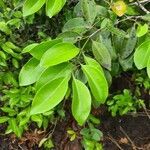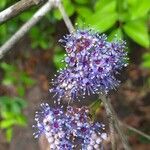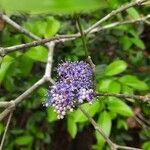| Therapeutic use
|
Bronchitis (bark), Abdominal pain (fruit), Analgesics (fruit), Anemia (fruit), Anthelmintics (fruit), Anti-bacterial agents (fruit), Antifungal agents (fruit), Anti-inflammatory agents (fruit), Antipruritics (fruit), Antipyretics (fruit), Appetite stimulants (fruit), Asthenia (fruit), Asthma (fruit), Astringents (fruit), Brain diseases (fruit), Bronchitis (fruit), Carbuncle (fruit), Cardiotonic agents (fruit), Chest pain (fruit), Colic (fruit), Constipation (fruit), Contraceptive agents (fruit), Cough (fruit), Dementia (fruit), Dental caries (fruit), Diarrhea (fruit), Diuretics (fruit), Dysentery (fruit), Dyspepsia (fruit), Dyspnea (fruit), Emaciation (fruit), Fertility agents (fruit), Fever (fruit), Flatulence (fruit), Gastric acid (fruit), Gastrointestinal diseases (fruit), Giardia (fruit), Heart diseases (fruit), Helminthiasis (fruit), Hemorrhage (fruit), Hymenolepiasis (fruit), Hyperhomocysteinemia (fruit), Hypoglycemic agents (fruit), Hypolipidemic agents (fruit), Infection (fruit), Intestinal diseases, parasitic (fruit), Jaundice (fruit), Laxatives (fruit), Leprosy (fruit), Lip neoplasms (fruit), Liver diseases (fruit), Mental disorders (fruit), Migraine disorders (fruit), Molluscacides (fruit), Mouth diseases (fruit), Neoplasms (fruit), Nervous system diseases (fruit), Neurotic disorders (fruit), Otitis media (fruit), Pharyngitis (fruit), Poliomyelitis (fruit), Pregnancy complications (fruit), General tonic for rejuvenation (fruit), Scorpion stings (fruit), Skin diseases (fruit), Snake bites (fruit), Spermatocidal agents (fruit), Stomach diseases (fruit), Toothache (fruit), Urination disorders (fruit), Uterine diseases (fruit), Wound healing (fruit), Anthelmintics (leaf), Antipruritics (leaf), Demulcents (leaf), Diuretics (leaf), Flatulence (leaf), Gout (leaf), Leprosy (leaf), Oral ulcer (leaf), Pharyngitis (leaf), General tonic for rejuvenation (leaf), Skin diseases (leaf), Smallpox (leaf), Stomatitis, aphthous (leaf), Wound healing (leaf), Anthelmintics (root), Appetite stimulants (root), Colic (root), Contraceptive agents (root), Cough (root), Diarrhea (root), Diuretics (root), Dyspepsia (root), Flatulence (root), Liver diseases (root), Pneumonia (root), Pregnancy complications (root), General tonic for rejuvenation (root), Toothache (root), Anemia (seed), Anthelmintics (seed), Anti-bacterial agents (seed), Antifungal agents (seed), Antinematodal agents (seed), Astringents (seed), Bile acids and salts (seed), Cestoda (seed), Chest pain (seed), Contraceptive agents (seed), Dermatologic agents (seed), Diarrhea (seed), Digestive system diseases (seed), Diuretics (seed), Dizziness (seed), Dysentery (seed), Exanthema (seed), Fertility agents (seed), Fever (seed), Flatulence (seed), Headache (seed), Hematemesis (seed), Hemorrhage (seed), Insecticides (seed), Jaundice (seed), Laxatives (seed), Leprosy (seed), Low back pain (seed), Migraine disorders (seed), General tonic for rejuvenation (seed), Skin diseases (seed), Stomach diseases (seed), Tuberculosis (seed), Uterine contraction (seed), Alterative (unspecified), Anthelminthic (unspecified), Astringent (unspecified), Carminative (unspecified), Chest (unspecified), Cough (unspecified), Diarrhea (unspecified), Diuretic (unspecified), Fever (unspecified), Ringworm (unspecified), Skin (unspecified), Stimulant (unspecified), Tonic (unspecified), Tumor(Abdomen) (unspecified), Vermifuge (unspecified), Vermifuge? (unspecified), Stomachic (unspecified), Taenifuge (unspecified), Abdominal neoplasms (unspecified), Abdominal pain (unspecified), Analgesics (unspecified), Anemia (unspecified), Anthelmintics (unspecified), Anti-bacterial agents (unspecified), Anticonvulsants (unspecified), Anti-inflammatory agents (unspecified), Antineoplastic agents (unspecified), Antioxidants (unspecified), Antiparasitic agents (unspecified), Antipyretics (unspecified), Antispermatogenic agents (unspecified), Ascaris (unspecified), Astringents (unspecified), Cathartics (unspecified), Chemoprevention (unspecified), Chest pain (unspecified), Contraceptive agents (unspecified), Contraceptives, oral (unspecified), Diuretics (unspecified), Dysentery (unspecified), Epilepsy (unspecified), Hematologic diseases (unspecified), Herpesvirus 4, human (unspecified), Hypotension (unspecified), Intestinal diseases, parasitic (unspecified), Laxatives (unspecified), Liver diseases (unspecified), Neoplasms (unspecified), Periodontitis (unspecified), Poliomyelitis (unspecified), Skin diseases (unspecified), Toothache (unspecified), Urinary tract infections (unspecified), Cooling effect on body (unspecified), Cestoda (whole plant)
|



